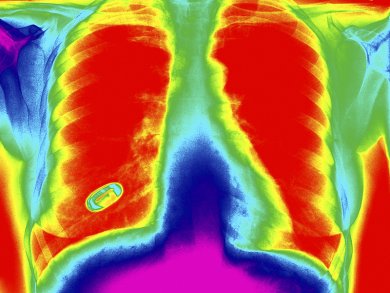Lungs are lined with a phospholipid layer which helps with the removal of inhaled particles. Damage to this layer by pollutants such as ozone can lead to decreased pulmonary function.
A collaboration led by Katherine Thompson, Birkbeck College, London, UK, and Adrian Rennie, Uppsala University, Sweden, has used neutron reflection and surface pressure measurements to study layers of phospholipid 1-palmitoyl-2-oleoyl-sn-glycero-3-phosphocholine (POPC) at a water surface in real time.
The neutron reflection measurements reveal that the palmitoyl strand is lost from the air-water interface on reaction with ozone. Solubilization is not seen as the headgroup region remains unperturbed by the reaction. Initial reaction of POPC with ozone at low concentrations leads to rapid increase in surface pressure followed by slow decrease due to loss of material from the surface.
- Reaction of a Phospholipid Monolayer with Gas-Phase Ozone at the Air−Water Interface: Measurement of Surface Excess and Surface Pressure in Real Time
K. Thompson, A. Rennie, M. King, S. Hardman, C. Lucas, C. Pfrang, B. Hughes, A. Hughes,
Langmuir 2010, 26.
DOI: 10.1021/la1022714



